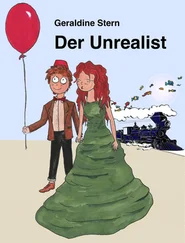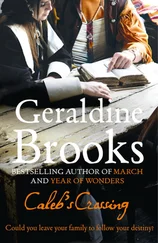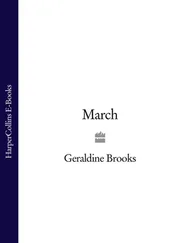Geraldine Mitton - Chelsea
Здесь есть возможность читать онлайн «Geraldine Mitton - Chelsea» — ознакомительный отрывок электронной книги совершенно бесплатно, а после прочтения отрывка купить полную версию. В некоторых случаях можно слушать аудио, скачать через торрент в формате fb2 и присутствует краткое содержание. Жанр: Путешествия и география, foreign_prose, foreign_language, на английском языке. Описание произведения, (предисловие) а так же отзывы посетителей доступны на портале библиотеки ЛибКат.
- Название:Chelsea
- Автор:
- Жанр:
- Год:неизвестен
- ISBN:нет данных
- Рейтинг книги:5 / 5. Голосов: 1
-
Избранное:Добавить в избранное
- Отзывы:
-
Ваша оценка:
- 100
- 1
- 2
- 3
- 4
- 5
Chelsea: краткое содержание, описание и аннотация
Предлагаем к чтению аннотацию, описание, краткое содержание или предисловие (зависит от того, что написал сам автор книги «Chelsea»). Если вы не нашли необходимую информацию о книге — напишите в комментариях, мы постараемся отыскать её.
Chelsea — читать онлайн ознакомительный отрывок
Ниже представлен текст книги, разбитый по страницам. Система сохранения места последней прочитанной страницы, позволяет с удобством читать онлайн бесплатно книгу «Chelsea», без необходимости каждый раз заново искать на чём Вы остановились. Поставьте закладку, и сможете в любой момент перейти на страницу, на которой закончили чтение.
Интервал:
Закладка:
The building is in three wings, enclosing at the back laundry, hospital, Commandant’s house, etc., and great playgrounds for the boys. Long low dormitories, well ventilated, on the upper floors in the central building contain forty beds apiece, while those in the two wings are smaller, with thirteen beds each. Below the big dormitories are the dining-rooms, the larger one decorated with devices of arms; these were brought from the Tower and arranged by the boys themselves. There are 550 inmates, admitted between the ages of nine and eleven, and kept until they are fourteen or fifteen. The foundation was established by the Duke of York in 1801, and was ready for occupation by 1803. It was designed to receive 700 boys and 300 girls, and there was an infant establishment connected with it in the Isle of Wight. In 1823 the girls were removed elsewhere. There are a number of boys at the sister establishment, the Hibernian Asylum, in Ireland. The Commandant, Colonel G. A. W. Forrest, is allowed 6½d. per diem for the food of each boy, and the bill of fare is extraordinarily good. Cocoa and bread-and-butter, or bread-and-jam, for breakfast and tea; meat, pudding, vegetables, and bread, for dinner. Cake on special fête-days as an extra. The boys do credit to their rations, and show by their bright faces and energy their good health and spirits. They are under strict military discipline, and both by training and heredity have a military bias. There is no compulsion exercised, but fully 90 per cent. of those who are eligible finally enter the army; and the school record shows a long list of commissioned and non-commissioned officers, and even two Major-Generals, who owed their early training to the Chelsea Asylum. The site on which the Asylum stands was bought from Lord Cadogan; it occupies about twelve acres, and part of it was formerly used for market-gardens.
One of the schoolrooms has still the pulpit, and a raised gallery running round, which mark it as having been the original chapel; but the present chapel stands at the corner of King’s Road and Cheltenham Terrace. On Sunday morning the boys parade on the green in summer and on the large playground in winter before they march in procession to the chapel with their band playing, a scene which has been painted by Mr. Morris, A.R.A., as “The Sons of the Brave.” The chaplain is the Rev. G. H. Andrews. The gallery of the chapel is open to anyone, and is almost always well filled. The annual expenditure of the Asylum is supplied by a Parliamentary grant.
On Hamilton’s Survey the ground now occupied by the Duke of York’s School is marked “Glebe,” and exactly opposite to it, at the corner where what is now Cheltenham Terrace joins King’s Road, is a small house in an enclosure called “Robins’ Garden.” On this spot now stands Whitelands Training College for school-mistresses. “In 1839 the Rev. Wyatt Edgell gave £1,000 to the National Society to be the nucleus for a building fund, whenever the National Society could undertake to build a female training college.” But it was not until 1841 that the college for training school-mistresses was opened at Whitelands. In 1850 grants were made from the Education Department and several of the City Companies, and the necessary enlargements and improvements were set on foot. Some of the earlier students were very young, but in 1858 the age of admission was raised to eighteen. From time to time the buildings have been enlarged. Mr. Ruskin instituted in 1880 a May Day Festival, to be held annually, and as long as he lived, he himself presented to the May Queen a gold cross and chain, and distributed to her comrades some of his volumes. Mr. Ruskin also presented to the college many books, coins, and pictures, and proved himself a good friend. In the chapel there is a beautiful east window erected to the memory of Miss Gillott, one of the former governesses. The present Principal is the Rev. J. P. Faunthorpe, F.R.G.S.
On the west side is Walpole Street, so called from the fact that Sir Robert Walpole is supposed to have lodged in a house on this site before moving into Walpole House, now in the grounds of the Royal Hospital. Walpole Street leads us into St. Leonard’s Terrace, formerly Green’s Row, which runs along the north side of the great court known as Burton’s Court, treated in the account of the Hospital. In this terrace there is nothing calling for remark. Opening out of it, parallel to Walpole Street, runs the Royal Avenue, also connected with the Hospital. To the north, facing King’s Road, lies Wellington Square, named after the famous Wellington, whose brother was Rector of Chelsea (1805). The centre of the square is occupied by a double row of trees. St. Leonard’s Terrace ends in Smith Street, the southern part of which was formerly known as Ormond Row. The southern half is full of interest. Durham House, now occupied by Sir Bruce Maxwell Seton, stands on the site of Old Durham House, about which very little is known. It may have been the town residence of the Bishops of Durham, but tradition records it not. Part of the building was of long, narrow bricks two inches wide, thus differing from the present ones of two and a half inches; some of the same sort are still preserved in the wall of Sir Thomas More’s garden. This points to its having been of the Elizabethan or Jacobean period. Yet in Hamilton’s Survey it is not marked; instead, there is a house called “Ship House,” a tavern which is said to have been resorted to by the workmen building the Hospital. It is possible this is the same house which degenerated into a tavern, and then recovered its ancient name. Connected with this until quite recently there was a narrow passage between the houses in Paradise Row called Ship Alley, and supposed to have led from Gough House to Ship House. This was closed by the owner after a lawsuit about right of way.
A little to the north of Durham House was one of the numerous dwellings in Chelsea known as Manor House. It was the residence of the Steward of the Manor, and had great gardens reaching back as far as Flood Street, then Queen Street. This is marked in a map of 1838. This house was afterwards used as a consumption hospital, and formed the germ from which the Brompton Hospital sprang. On its site stands Durham Place. Below Durham Place is a little row of old houses, or, rather, cottages, with plaster fronts, and at the corner a large public-house known as the Chelsea Pensioner. On the site of this, the corner house, the local historian Faulkner lived. He was born in 1777, and wrote histories of Fulham, Hammersmith, Kensington, Brentford, Chiswick, and Ealing, besides his invaluable work on Chelsea. He is always accurate, always painstaking, and if his style is sometimes dry, his is, at all events, the groundwork and foundation on which all subsequent histories of Chelsea have been reared. Later on he moved into Smith Street, where he died in 1855. He is buried in the Brompton Road Cemetery.
The continuation of St. Leonard’s Terrace is Redesdale Street; we pass down this and up Radnor Street, into which the narrow little Smith Terrace opens out. Smith Street and Smith Terrace are named after their builder. Radnor House stood at the south-eastern corner of Flood Street, but the land owned by the Radnors gave its name to the adjacent street. At the northern corner of Radnor Street stands a small Welsh chapel built of brick. In the King’s Road, between Smith and Radnor Streets, formerly stood another manor-house. Down Shawfield Street we come back into Redesdale Street, out of which opens Tedworth Square. Robinson’s Street is a remnant of Robinson’s Lane, the former name of Flood Street, a corruption of “Robins his street,” from Mr. Robins, whose house is marked on Hamilton’s map. Christ Church is in Christchurch Street, and is built of brick in a modern style. It holds 1,000 people. The organ and the dark oak pulpit came from an old church at Queenhithe, and were presented by the late Bishop of London, and the carving on the latter is attributed to Grinling Gibbons. At the back of the church are National Schools. Christchurch Street, which opens into Queen’s Road West (old Paradise Row), was made by the demolition of some old houses fronting the Apothecaries’ Garden.
Читать дальшеИнтервал:
Закладка:
Похожие книги на «Chelsea»
Представляем Вашему вниманию похожие книги на «Chelsea» списком для выбора. Мы отобрали схожую по названию и смыслу литературу в надежде предоставить читателям больше вариантов отыскать новые, интересные, ещё непрочитанные произведения.
Обсуждение, отзывы о книге «Chelsea» и просто собственные мнения читателей. Оставьте ваши комментарии, напишите, что Вы думаете о произведении, его смысле или главных героях. Укажите что конкретно понравилось, а что нет, и почему Вы так считаете.












